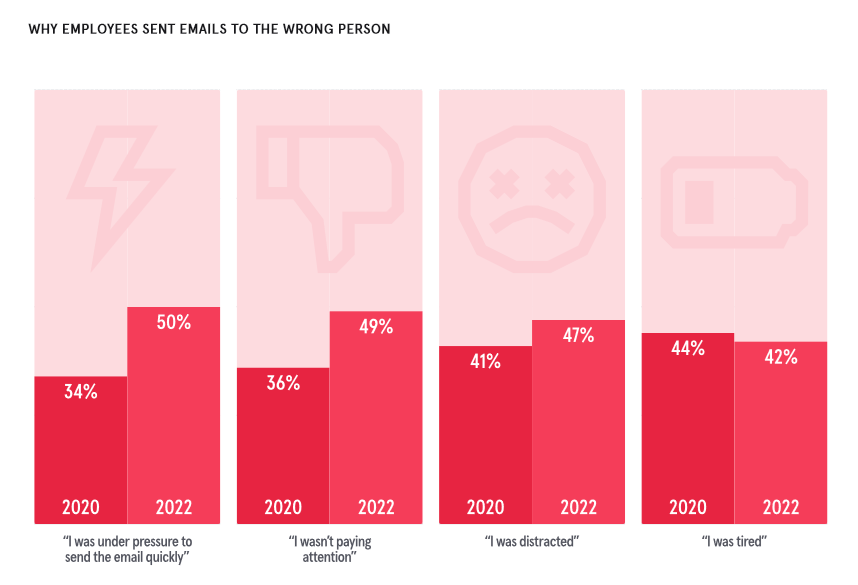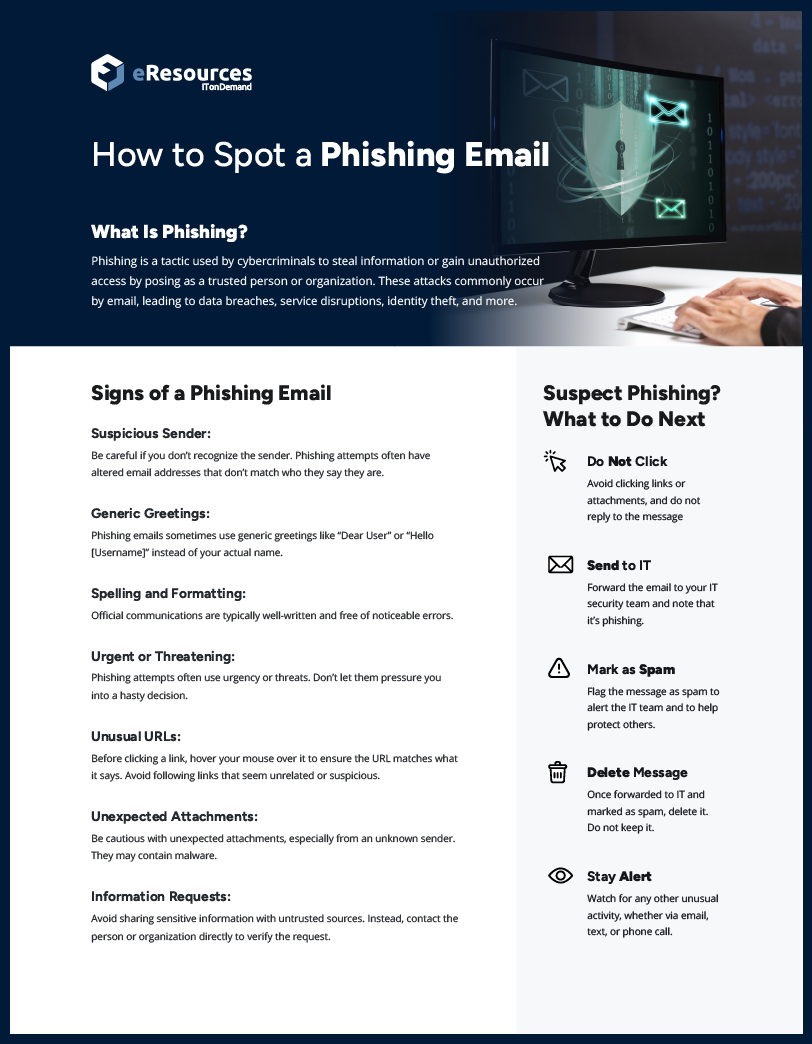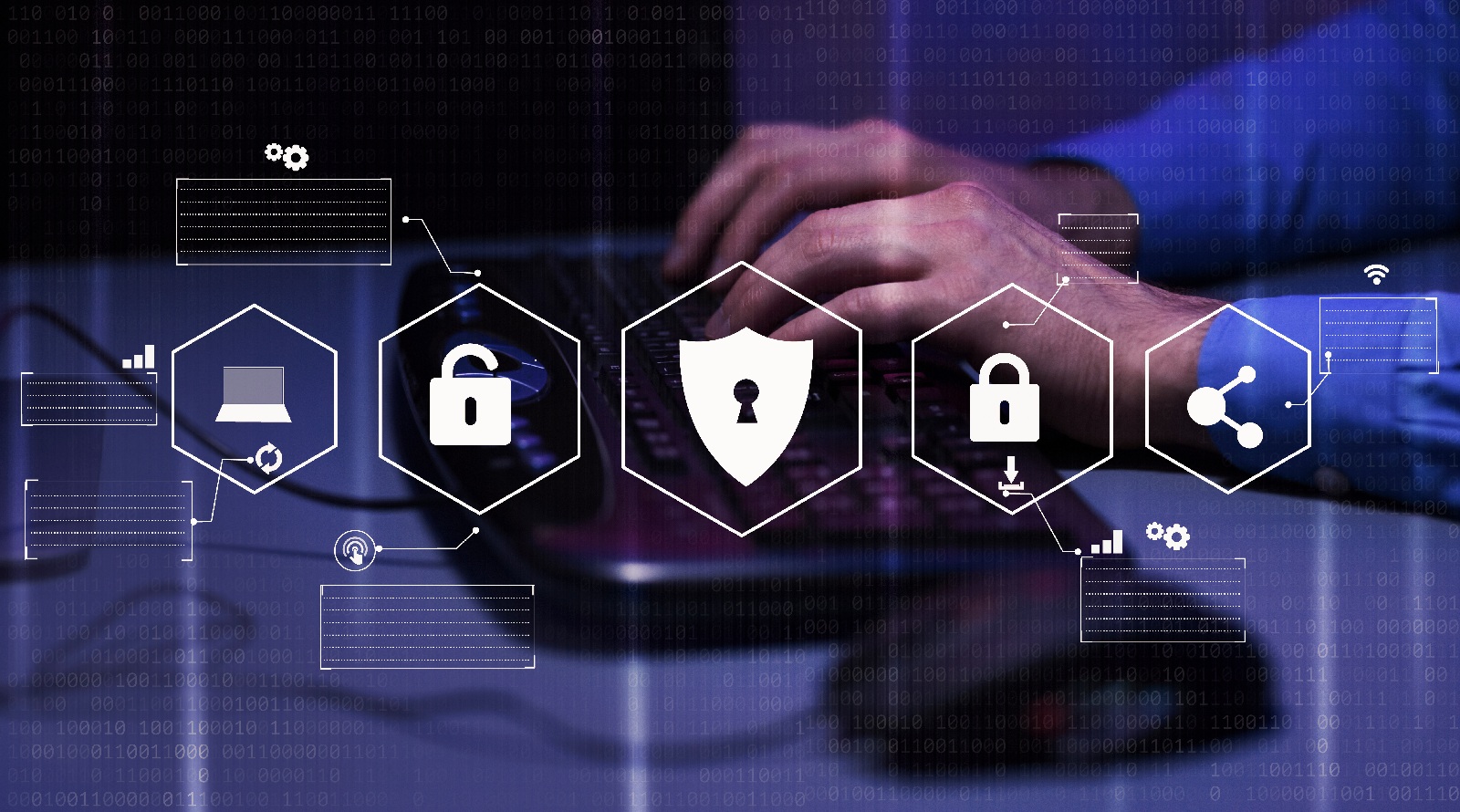
Human error is a leading cause of cybersecurity breaches, often occurring through simple mistakes like weak passwords, clicking malicious links, or ignoring security updates. One IBM report suggests that up to 95% of data breaches involved human error. Even small actions can lead to major consequences, such as data exposure or unauthorized access.
No matter how strong the security system is, human mistakes can bypass some of those protections. That means that for businesses to better protect themselves, they need to invest not only in cybersecurity solutions but also in their staff. Notably, 26% of employees admitted to falling for a phishing email at work, highlighting how many people continue to make security mistakes.
What Is Human Error?
Human error refers to mistakes that can lead to negative outcomes, such as security vulnerabilities in cybersecurity. These occur due to a variety of reasons, including lack of attention, poor judgment, misunderstanding, or not realizing the weight of their mistakes. In cybersecurity, human error often results in data breaches, system compromises, or unauthorized access, making it a critical factor.
The Role of Human Error in Cybersecurity
Human error is a significant factor in cybersecurity breaches, often serving as a weak point in security systems. Simple mistakes like using weak passwords or clicking on phishing links can expose organizations to serious risks. Even sending an email with sensitive information to the wrong person can cause issues. Human error remains a primary cause of data breaches and security incidents despite advanced security measures.
These errors are often unintentional and occur during routine tasks. Clicking on unfamiliar links or neglecting software updates are common examples. To reduce the impact of human error, organizations must combine strong security technology with regular employee training and awareness programs. By doing so, they can minimize the likelihood of simple mistakes leading to major cybersecurity issues.
Types of Human Error
Human error is a significant factor in cybersecurity breaches, with different types of mistakes leading to vulnerabilities. These errors are generally categorized into three types: skill-based errors, decision-based errors, and perceptual errors.
Skill-Based Errors
Skill-based errors occur when individuals make mistakes while performing tasks they are familiar with. For example, an employee who regularly sends encrypted emails might accidentally forget to encrypt a sensitive message because they are distracted or in a rush. This type of error stems from a lapse in attention or execution rather than a lack of knowledge.
Decision-Based Errors
Decision-based errors happen when a person makes a poor decision due to faulty reasoning or a lack of understanding. An example is when an employee chooses to use a weak password, thinking that a simple password is good enough for their account. This type of human error often comes from not realizing the risk of using easy-to-guess passwords.
Perceptual Errors
Perceptual errors arise when someone misunderstands a situation due to misleading information. A common scenario is when an employee receives an email that looks like it’s from a trusted source but is actually a phishing attempt. Because they fail to recognize subtle signs of fraud, they may click on a malicious link without realizing it’s harmful.
Recognizing these types of human errors helps organizations understand how everyday actions can lead to cybersecurity risks and provides insight into ways to mitigate these risks.
Human Error Isn’t Always the User’s Fault
Human error in cybersecurity can be caused by work conditions, not just carelessness. Even skilled employees can make mistakes when dealing with fatigue, tight deadlines, or unfamiliar systems. It’s easy to overlook a small detail or click the wrong link when juggling multiple tasks at once. These errors usually happen not because someone isn’t trying but because the job pressures make it hard to avoid mistakes.
Other factors, like insufficient training or overly complicated tools, can also lead to errors. If employees aren’t adequately taught to spot threats or are using confusing systems, even the most dedicated workers might make a wrong decision. Many employees try to follow security rules, but errors become more likely when the systems they use are hard to navigate.
That said, there are times when human error is the result of avoidable choices, like skipping security steps or using weak passwords. While many mistakes are understandable, it’s vital to recognize that some errors come from intentionally not following basic security practices. Organizations must balance support with accountability, understanding that human error is sometimes unavoidable, but employees should still be mindful of their actions.

Source: Psychology of Human Error 2022
Factors That Contribute to Human Error
Human error in cybersecurity is influenced by several factors that can cause mistakes by even the best employees. Here are a few of the key factors to know:
- Lack of Training: Employees unfamiliar with common threats like phishing or ransomware are more likely to fall for scams.
- Fatigue: Tired or overworked employees are more likely to make careless errors even if they’re well trained.
- Time Pressure: Rushed tasks increase the likelihood of skipping important security steps, like verifying email senders or using proper passwords.
- Complex Systems: Overly complicated tools or security protocols can confuse users, leading to more mistakes.
- Complacency: Employees may assume that security isn’t their responsibility or that automated systems will always catch errors.
Ensuring employees are well-trained, well-equipped, and have achievable timelines can reduce the chances of human error.
5 Examples of Human Error in Cybersecurity
To help explain the direct impact of human error on cybersecurity, we’ve prepared several examples to highlight what could happen.
Example 1: Weak Password Creation
In a rush to finish a task, an employee sets their email password to “password123,” planning to change it later but forgetting. This weak password is easy for hackers to crack using automated tools. Once inside the email account, the attacker can access sensitive company data, reset passwords for other systems, and even view confidential information. This small mistake opens the door to a larger data breach impacting the entire company.
Example 2: Clicking on a Phishing Email
An employee receives an email that looks like it’s from their manager, asking them to download an attachment quickly. Without thinking twice, they click on the link and download the file, not realizing it contains malware. The malware spreads through the company’s network, allowing hackers to steal sensitive files. Just a few wrong clicks can lead to widespread damage to an organization.
Example 3: Sending Sensitive Information to the Wrong Person
While juggling multiple tasks, an employee accidentally sends an email containing confidential client information to the wrong contact. That happens due to autocomplete suggesting a similar name. Now, sensitive data has been shared with someone outside the company. This type of error can lead to data leaks, loss of client trust, and even legal issues due to privacy violations.
Example 4: Ignoring Software Update Notifications
An employee keeps delaying software updates, thinking they’re not urgent. However, these updates often fix security flaws. By ignoring them, the employee leaves their system vulnerable. Eventually, hackers exploit the outdated software to install ransomware, locking down critical company files until a ransom is paid. This simple act of ignoring updates can cause a major cybersecurity disaster for the company.
Example 5: Misconfiguring Security Settings
An inexperienced network administrator sets up the company’s firewall but accidentally leaves specific ports open that should be blocked. Hackers find this weak spot and use it to break into the system. Once inside, they set up spyware to track what employees at the company are doing. That data is then later sold to a competitor. One small oversight in security configuration can leave an organization vulnerable.

How To Lower the Cybersecurity Impact of Human Error
Some degree of human error is unavoidable, but its impact on cybersecurity can be reduced through a combination of training, automation, and workplace culture. Addressing the common mistakes employees make on a day-to-day basis helps organizations strengthen their defenses.
- Plan routine cybersecurity awareness training to teach employees how to identify phishing scams and risky behaviors.
- Use multi-factor authentication (MFA) to reduce the risk of unauthorized access due to weak or stolen passwords.
- Automate software updates to ensure all systems are protected against the latest vulnerabilities.
- Set realistic deadlines so staff are not pressured to cut corners with cybersecurity to help save time.
- Implement access control policies to limit the number of employees accessing sensitive data.
- Make it easy to report suspicious activities and encourage good cybersecurity habits that are easy for employees to practice.
- Establish clear incident response protocols so employees know what to do when they suspect a security breach or error.
- Routinely review and update security policies to ensure they align with the latest threats and cybersecurity best practices.
By integrating some of these strategies, organizations can lower the chances of a simple mistake leading to a bigger incident. Ongoing education and planning can reduce the impact of human error on cybersecurity.
Get Cybersecurity Awareness Training with ITonDemand
Human error is a major challenge in cybersecurity, often leading to breaches, data loss, and other incidents. Simple mistakes can have serious consequences. With proper training, clear protocols, and the right tools, these risks can be significantly reduced. However, Ignoring the human element can leave businesses more vulnerable, making it essential to address.
At ITonDemand, cybersecurity is always a high priority with our partners. Our team offers comprehensive cybersecurity awareness training and IT security solutions, always keeping an eye out for our clients. Whether you need to train your staff or strengthen your overall security, ITonDemand is here to help you minimize the impact of human error and safeguard your business.




















